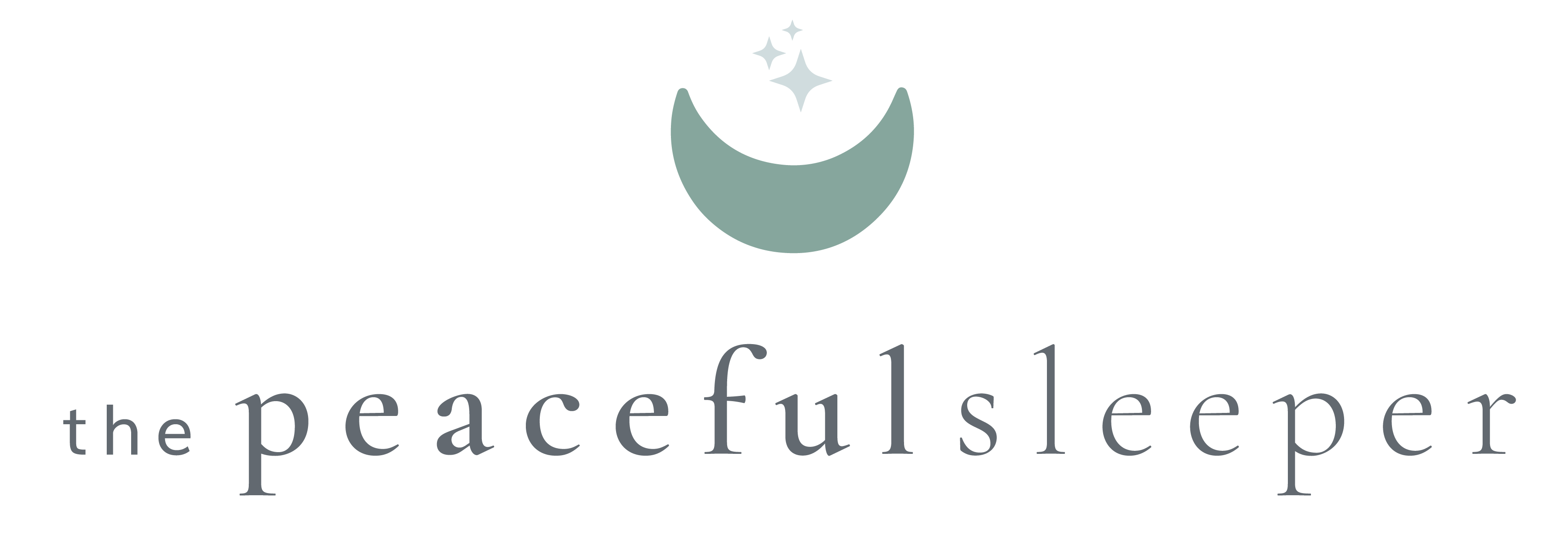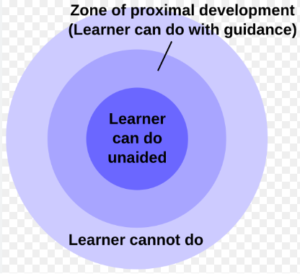Did you know the best way to ensure success with sleep learning is to stay in your baby’s zone of proximal development? Let’s dive into what this means!
When you are starting sleep learning (or “sleep training”) with your baby or toddler, it can be tricky to know what approach to choose and if that approach is working.
As we all know there are SO many different approaches to “sleep training” out there and opinions on what approach is best.
First of all, the main reason why I refer to the process of teaching your baby independent sleep skills as “sleep learning” is that we are teaching them a skill, as opposed to “training” them using a prescribed set of “one size fits all” steps. But you can read more about what sleep learning means, here.
Second of all, we have 4 main approaches, and “cry it out” is a strategy used in some of the approaches but not all of the approaches. After all, every baby is different and what works for one baby may not work for another.
The Peaceful Sleeper method of sleep learning is all about being tuned in and ensuring that the process is a good fit for you and your baby. In order for this to happen, and for the learning to be successful, we need to ensure that we are staying in your baby’s zone of proximal development.
In this blog post I’m going to talk about:
What is the zone of proximal development?
Sleep learning and the zone of proximal development
How you know if you are in your baby’s zone of proximal development
What is the zone of proximal development?
The zone of proximal development is a concept in education used to help with skill development. It was developed by a psychologist named Lev Vygotsky in the early 1900s.
The idea is that there are tasks or skills we can do completely independently, there are tasks or skills we cannot do even with assistance, and there are tasks and skills we can do with some assistance (our zone of proximal development).
For optimal learning to occur, we need to be working in our zone of proximal development. If we can already do the task independently then obviously learning is not happening. If we are trying to learn something that is too difficult for where we are currently at, then learning will not happen. Success in learning a new skill happens when we are being supported to learn something that is just slightly beyond what we can currently do.
This concept is used in the education setting all the time. Teachers work with students to help them progress through learning skills that build off of one another and are in their zone of proximal development. For example, we may teach one 5 year old to read the word “cat” but another 5 year old may be learning the letters of the alphabet. There is no value in learning to read the word “cat” if you don’t have an understanding of the alphabet yet.
This idea of how to achieve optimal learning can be applied to learning the skill of independent sleep.
Sleep learning and the zone of proximal development
When we are working with a baby to help them get better sleep, there are many different strategies or approaches to choose from.
There is everything from full extinction CIO, to CIO with timers, to “no cry”. Choosing the best approach can be daunting and overwhelming. Often times our values and parenting style plays a huge role in deciding how to approach sleep learning.
Of course, your values and parenting style SHOULD be a factor, however, the bottom line is, if you are using an approach to teach a skill that is not in your baby’s zone of proximal development then most likely you will both become super frustrated and you won’t have success.

Here’s an example:
Let’s say you choose to start with a sleep learning approach that has set timers (10, 15, 20 minutes) with check ins in between. You may feel that this is a good fit for you because you like the structure and there’s no reason to believe it won’t be a good fit for your baby.
Now let’s say that after you start implementing the approach you notice that your baby becomes super escalated when you go in for the first check in. Maybe they amp up their crying as soon as you enter the room or their crying escalates when you go to put them back in the crib after the check in.
In order to stay in your baby’s zone of proximal development you could consider either doing a longer first timer and then shorter subsequent timers or you could pivot to a more gradual approach where you stay in the room with your baby as opposed to leaving and doing check ins at the end of the timers.
There isn’t a right or wrong way here – it’s just about what way (or approach) is going to lead to success for YOUR baby.
So when choosing an approach to start with, the best thing you can do is choose an approach that feels like a good fit for you and that you think will be in your baby’s zone of proximal development. Then be ready to make the necessary tweaks to the plan or pivots in order to ensure you are staying in their zone of proximal development.
How do you know if you are in your baby’s zone of proximal development? Keep reading!
How you know if you are in your baby’s zone of proximal development

There are two main ways to know if the sleep learning approach you are taking is in your baby’s zone of proximal development:
- It’s productive
- There’s progress
It’s productive:
When we are giving a baby time and space to attempt sleep initiation on their own, we want that time to be productive. By productive I mean
- Variability
- Self-soothing
We want lots of great variability in their protesting and not dysregulated crying. I often recommend rating their crying on a scale of 1-10/10 so you can be sure that if there are moments of 8-10/10 crying, they are able to bring themselves back down within a few moments and spend more of the time in the 1-5/10 range.
Of course this is very generalized and it’s much more important that you are tuned in to your mom gut and your baby. If at any point your baby seems dysregulated or that they need connection and support for you, please do not hesitate to respond to them. Just like with any learning, if your little one is dysregulated then they are most likely not in their zone of proximal development.
The other piece to the learning being productive is that we want your baby to be showing signs of self-soothing. Every baby has different methods of self-soothing but some common ones are:
- Sucking on hands
- Kneading the crib sheet or their clothing
- Shaking head side to side
- Lifting legs up and kicking down on the crib mattress
- Moving their body/limbs to create motion
If you are ever not sure if the learning is productive and if you should be making tweaks to the approach or pivoting to a different approach, we can help! We can hop on a call to chat through it with you or even jump on a Zoom call to watch the baby monitor with you!
There’s progress:
The first thing to remember is that progress is not always linear. When you are starting sleep learning with your baby it is normal for progress to seem clunky. That may look like initial great progress on the first few days and then not as great progress for a few days. Or it can mean only a few small wins for the first 3-5 days and then some bigger wins happen.
This is why I highly recommend taking good notes and collecting data. After 3-5 days there for sure should be some wins. And after 5-7 days there should be clear progress (even if it’s not linear). If this is happening then you can likely continue with the approach you are using as it’s likely in your baby’s zone of proximal development. However, if this is not the case then I recommend evaluating the approach you are using and making tweaks or pivots to ensure you ARE in your baby’s zone of proximal development.
If you need any help evaluating whether or not there is progress we can absolutely help with this!
Recap on the zone of proximal development and how it relates to sleep learning
Every parent who chooses to do sleep learning with their baby or toddler wants it to be super successful in the least amount of time possible. Unfortunately, there is a misconception out there that the fastest way for every baby to start sleeping independently is to let them “cry it out”. Although it’s true that MOST babies have quick success with being given some time and space to work on self-soothing, it’s not true for every baby and if “CIO” is being used it shouldn’t be the only strategy.
The bottom line is, successful sleep learning comes from staying in each baby’s individual zone of proximal development.
Don’t forget that you don’t have to try and navigate this on your own. We are here to help you! We would love to work with you and your family to choose a sleep learning approach that is a good fit for you and your family and help you work through the process to ensure we are staying in your little one’s zone of proximal development and help them learn independent sleep skills as quickly as possible.
Click here to hop on the phone with one of our amazing sleep consultants!




0 Comments